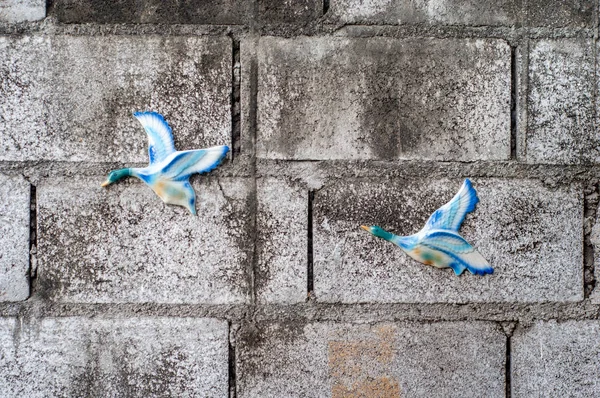When to change sugar water in a hummingbird feeder depends on several factors, including weather conditions and feeder cleanliness.
In the enchanting world of hummingbirds, maintaining a hummingbird feeder isn’t just about filling it with sugar water. Knowing when to change the nectar is a crucial step in ensuring these tiny, iridescent jewels keep frequenting your backyard oasis.
Just like us, these delicate birds deserve fresh, clean sustenance, and understanding the timing for nectar replacement can make all the difference in attracting and caring for these aerial wonders.

When To Change Sugar Water In Hummingbird Feeder
Hummingbird enthusiasts often wonder, “When should I change the sugar water in my hummingbird feeder?” The frequency of changes depends on the weather. In hot weather, it’s crucial to change the sugar water every 2-3 days to prevent fermentation and bacterial growth.
Cooler weather allows for a longer interval, typically every 5-7 days. Keeping an eye out for signs of spoilage, such as cloudiness or mold, is essential. Maintaining cleanliness is key to ensuring the health of your hummingbirds. Regular cleaning and refilling prevent harmful bacteria buildup, keeping your tiny visitors happy and healthy.
Factors Affecting Sugar Water Lifespan
Temperature
The temperature significantly impacts sugar water fermentation, affecting its freshness.
Warmer temperatures accelerate the fermentation process, leading to a shorter lifespan for sugar water.
Sunlight Exposure
Sunlight exposure directly contributes to the degradation of sugar water, hastening its spoilage.
Placing feeders in shaded areas is crucial to prevent sunlight-induced degradation and maintain sugar water freshness.
Feeder Contamination
Various sources like dirt, debris, and insects can contaminate feeders, leading to sugar water spoilage.
Contamination accelerates spoilage, emphasizing the need for regular cleaning and maintenance of feeders.
Signs That Sugar Water Needs to Be Changed
Visual Inspection
Check for cloudiness in the sugar water, which indicates microbial growth and spoilage.
Look for mold or algae growth, which can contaminate the sugar water and harm hummingbirds.
Smell Test
Use your sense of smell to detect any sour or fermented odors emanating from the sugar water.
Insect Activity
Increased presence of ants, bees, or other insects around the feeder may indicate spoiled sugar water.
Hummingbird Behavior
If hummingbirds visit the feeder less frequently, it may be a sign that the sugar water needs changing.
Watch for signs of reluctance to feed, such as hovering near the feeder without feeding, which could indicate spoiled sugar water.
Frequency of Changing Sugar Water
General Guidelines
It is recommended to change sugar water every 2-3 days to maintain its freshness and quality.
Adjustments Based on Environmental Factors
In hot and sunny weather, consider changing sugar water more frequently to prevent spoilage.
In cooler temperatures, sugar water may require less frequent changes, but regular monitoring is still essential.
Tips for Maintaining Fresh Sugar Water
Use of Reducing Agents
Extend the lifespan of sugar water by adding citric acid or vinegar, which helps prevent fermentation.
Regular Cleaning of Feeders
Clean feeders regularly with hot water and mild soap to remove mold, algae, and debris.
Proper Storage of Sugar Water
Refrigerate unused sugar water to maintain its freshness.
Protect sugar water from sunlight and heat to prevent premature spoilage.

FAQs
How often should I change the sugar water in my hummingbird feeder?
It’s best to change the sugar water every 2-3 days, especially in hot weather, to prevent fermentation and bacterial growth.
What happens if I don’t change the sugar water regularly?
Stale sugar water can ferment, becoming harmful to hummingbirds and potentially leading to health issues. It can also attract insects and mold.
Can I wait longer than 2-3 days to change the sugar water?
It’s not recommended, as even in cooler weather, the sugar water can still spoil and pose risks to hummingbirds.
How can I tell if the sugar water in my feeder has gone bad?
Look for cloudiness, mold, or a fermented smell. If you notice any of these signs, it’s time to change the sugar water.
Is it okay to change the sugar water more frequently than every 2-3 days?
Yes, changing the sugar water daily is even better, especially in warmer climates or if you notice it becoming cloudy or dirty.
Should I clean my hummingbird feeder every time I change the sugar water?
Yes, cleaning the feeder with hot water and a brush is important to prevent mold and bacterial growth.
Can I use a solution other than sugar water in my hummingbird feeder?
No, hummingbirds rely on the energy provided by sugar water. Other solutions, like honey or artificial sweeteners, can be harmful to them.
Is there a specific time of day I should change the sugar water?
It’s best to change the sugar water in the evening or early morning when hummingbird activity is lower to avoid disturbing them.
How do I store unused sugar water?
Store any unused sugar water in the refrigerator in a clean, covered container for up to a week.
Are there any signs that hummingbirds will show if the sugar water is bad?
Hummingbirds may avoid the feeder or exhibit signs of illness if the sugar water has gone bad, such as lethargy or unusual behavior.

Conclusion
In conclusion, maintaining the freshness of sugar water in your hummingbird feeder is essential to ensure the health and well-being of these tiny, vibrant birds. Regularly changing the sugar water, especially in warmer weather, helps prevent fermentation and mold growth, which can be harmful to hummingbirds.
By following these simple guidelines and staying attentive to the condition of the sugar water, you can create a safe and inviting environment for these delightful visitors in your garden.